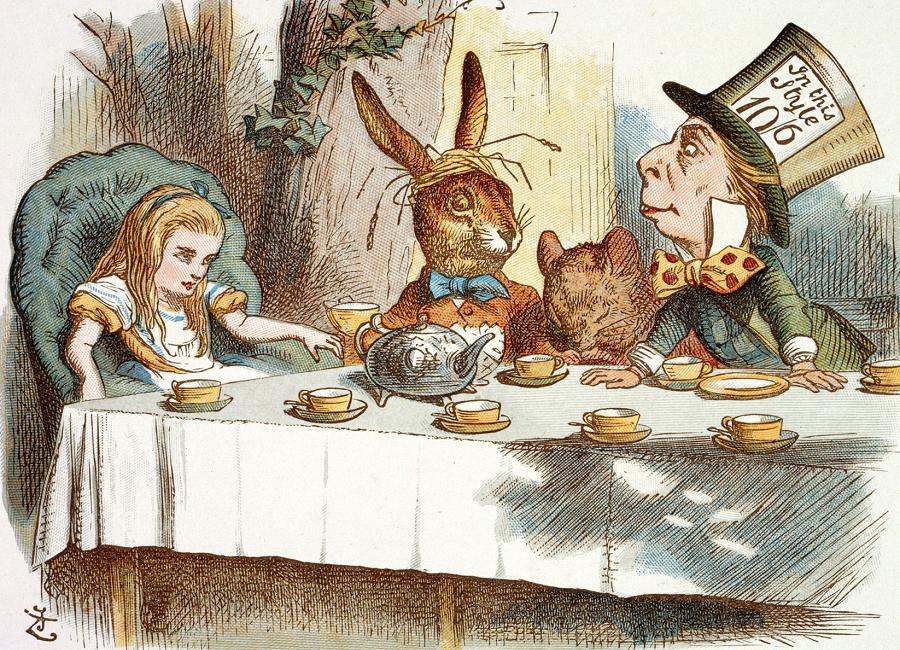Lewis Carroll is the pen name of British mathematician Charles Lutwidge Dodgson, author of the brilliantly creative Alice’s Adventures in Wonderland and Through the Looking-Glass. See below for books, games, puzzles, poems, and an Alice-style House of Cards that you can build yourself.
ALICE IN WONDERLAND
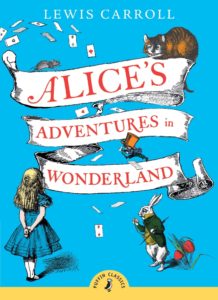
|
Lewis Carroll’s Alice’s Adventures in Wonderland, originally published in 1865, and its sequel, Through the Looking-Glass, and What Alice Found There (1871) have been in print ever since, and are now available in many different editions. I’d recommend those with the original John Tenniel illustrations. For ages 7 and up. |
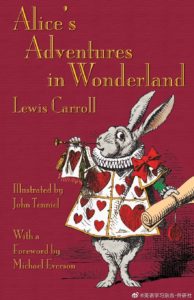
|
Alice’s Adventures in Wonderland has been translated into literally dozens of foreign languages, from Afrikaans to Zulu. Available through Amazon are Alice in Latin (Alicia in Terra Mirabili), French (Alice au Pays des Merveilles), German (Alice’s Abenteuer im Wunderland), Spanish (Alicia en el Pais de las Maravillas), Italian (Le Avventure di Alice nel Paese delle Meraviglie), and Chinese. |
| |
Project Gutenberg, which offers tens of thousands of free online books, has a long list of titles by Lewis Carroll, including Alice’s Adventures in Wonderland in English, German, and Italian. |
| |
At the British Library website, page through the original handwritten and illustrated manuscript of Alice’s Adventures in Wonderland. Included are a typewritten transcript and an audio option. |
MORE VERSIONS OF ALICE
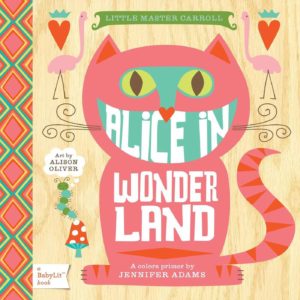
|
Jennifer Adams’s Alice in Wonderland (Gibbs Smith, 2012) in the BabyLit series is a board book that uses images from Alice to teach colors, via a white rabbit, orange Cheshire Cat, blue Caterpillar, and Queen of (red) Hearts. For ages 1-3. |
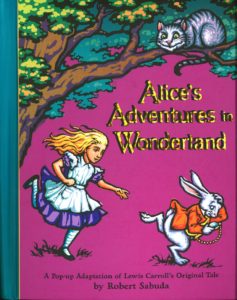
|
By Lewis Carroll and brilliant paper engineer Robert Sabuda, Alice’s Adventures in Wonderland: A Pop-Up Adaptation (Little Simon, 2003) is a work of art, with 3-D Tenniel-style images, inserted small booklets, a Victorian peep show (of Alice falling down the rabbit hole), and a fuzzy Cheshire cat. For ages 4-12. |
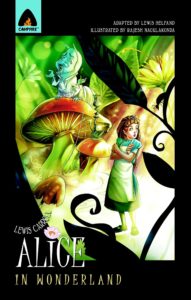
|
Adapted by Lewis Helfand, Alice in Wonderland: The Graphic Novel (Campfire, 2010) is one of a large series of well-done graphic adaptations of classic novels. See the complete list at the Campfire Graphic Novels website. For ages 7-11. |
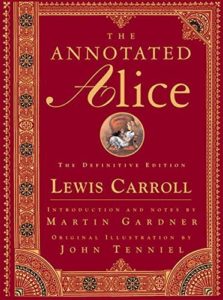
|
By Lewis Carroll with extensive notes by Martin Gardner, The Annotated Alice (W.W. Norton, 1999) is a fascinating read, with full text and illustrations of both Alice books, and crammed with extra tidbits of information. Included, for example, are French and German versions of the poem “Jabberwocky,” a discussion of puns, and several possible answers to the Mad Hatter’s riddle “Why is a raven like a writing-desk?” The annotations are in the wide margins of the text, so readers don’t have to keep flipping pages back and forth. |
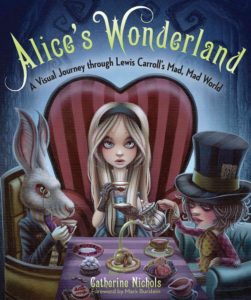
|
By Catherine Nichols, Alice’s Wonderland (Race Point Publishing, 2014), subtitled “A Visual Journey through Lewis Carroll’s Mad, Mad World,” is a beautifully designed and illustration-packed book showing the many ways in which Alice has been interpreted by visual artists. Chapters include “Alice’s Illustrators,” “Alice on Stage,” “Animated Alice,” and “Alice in Books and Music.” For ages 12 and up, but everybody will love the pictures. |
| |
Author A.S. Byatt’s There’s something about Alice is a fascinating essay on her relationship with Alice and other classic children’s books. |
ABOUT LEWIS CARROLL
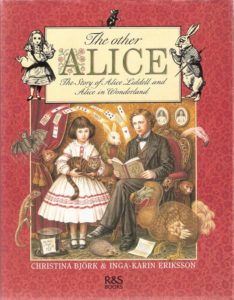
|
Christina Bjork’s The Other Alice (R&S Books, 1993) packs a lot of information into 100 illustrated pages: included is the story of the friendship between Carroll and Alice Liddell and how Alice’s Adventures in Wonderland came to be written, accounts of Victorian childhood, period photographs of Oxford, and more. For ages 10 and up. |
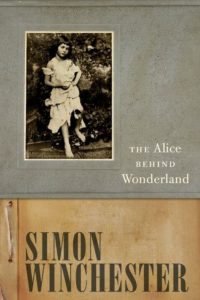
|
In Simon Winchester’s The Alice Behind Wonderland (Oxford University Press, 2011), the author uses Lewis Carroll’s 1858 photograph of six-year-old Alice Liddell, costumed as “The Beggar Maid,” to tell the story of the real Alice for whom Carroll wrote Alice’s Adventures in Wonderland. For teenagers and adults. |
|
From the Metropolitan Museum of Art, see Lewis Carroll’s photograph of Alice Liddle as the Beggar Maid. |
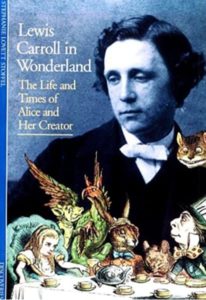 |
Stephanie Lovett Stoffel’s Lewis Carroll in Wonderland: The Life and Times of Alice and Her Creator (Harry N. Abrams, 1997) is a richly illustrated account of Carroll’s life and the Victorian era in which he lived. For teenagers and up. |
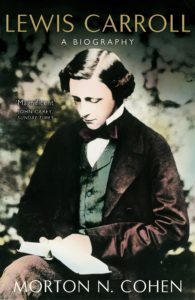 |
Morton Cohen’s Lewis Carroll (Vintage, 1996) is generally accepted as the definitive biography of Carroll. It’s over 600 pages long and intended for the dedicated older reader. |
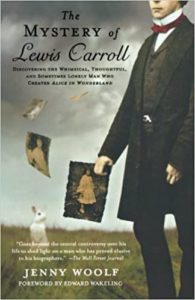 |
Also see Jenny Woolf’s chattier and shorter The Mystery of Lewis Carroll (St. Martin’s Press, 2010). For teenagers and adults. |
|
Jenny Woolf’s Lewis Carroll’s Shifting Reputation is an article on Carroll’s life and work published in Smithsonian magazine, April 2010. |
|
Lewis Carroll is a short biography from the Poetry Foundation. |
|
The Lewis Carroll Society of North America website has links to Carroll’s online texts, a photography collection, Lewis Carroll puzzles and games, a list of Carroll-inspired fiction books, and an extensive list of educational resources. |
|
The Victorian Web’s Lewis Carroll page has a wealth of information, including a gallery of Tenniel illustrations, a character map of Alice’s Adventures in Wonderland, literary essays, and social commentary. |












